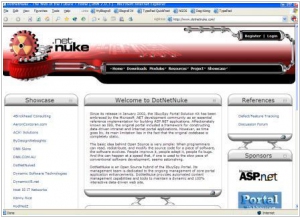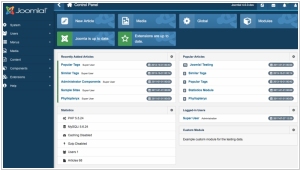DotNetNuke vs Joomla
March 19, 2025 | Author: Adam Levine
3★
DotNetNuke is a Web Content Management Platform (or CMS) for Microsoft ASP.NET, powering over 700,000 production web sites worldwide. The flexible DotNetNuke open source CMS platform also functions as a web application development framework. Depending on your role within your organization, DotNetNuke provides powerful benefits to support your Web initiatives.
7★
Joomla is a free and open source content management system (CMS) for publishing content on the World Wide Web and intranets and a model–view–controller (MVC) Web application framework that can also be used independently.
DotNetNuke and Joomla are, at first glance, remarkably similar. They both let you build websites, they both have templates to make those websites look fancy and they both let you control who can see what on said websites. They also both support plugins, which means you can spend hours installing things you don’t quite understand until everything breaks spectacularly. And, of course, they both support multiple languages, which is great if you want your site to be unreadable in a variety of ways.
The main difference between them lies in the secret forces of the universe that govern their existence. DotNetNuke, born in 2002 in the United States, runs on Microsoft’s ASP.NET, meaning it thrives in corporate environments where everything is powered by Windows, suits and a lingering fear of open-source anything. It’s particularly good for intranets, business portals and impressing middle managers who think “cloud” is just something that happens when it rains. It also has deep ties to Microsoft technologies like Azure and SharePoint, ensuring that once you’re in, you may never escape.
Joomla, meanwhile, came kicking and screaming into the world in 2005 in Australia, built on PHP like so many other things that people simultaneously love and hate. It’s better suited for community sites, blogs and small businesses that want to look professional but don’t want to sell their souls to Redmond. Unlike DNN, Joomla has a vast, sprawling global community that contributes an alarming number of extensions, many of which do precisely the same thing in slightly different ways. This makes Joomla the CMS equivalent of a flea market—exciting, full of treasures and mildly overwhelming.
See also: Top 10 Intranet Portals
The main difference between them lies in the secret forces of the universe that govern their existence. DotNetNuke, born in 2002 in the United States, runs on Microsoft’s ASP.NET, meaning it thrives in corporate environments where everything is powered by Windows, suits and a lingering fear of open-source anything. It’s particularly good for intranets, business portals and impressing middle managers who think “cloud” is just something that happens when it rains. It also has deep ties to Microsoft technologies like Azure and SharePoint, ensuring that once you’re in, you may never escape.
Joomla, meanwhile, came kicking and screaming into the world in 2005 in Australia, built on PHP like so many other things that people simultaneously love and hate. It’s better suited for community sites, blogs and small businesses that want to look professional but don’t want to sell their souls to Redmond. Unlike DNN, Joomla has a vast, sprawling global community that contributes an alarming number of extensions, many of which do precisely the same thing in slightly different ways. This makes Joomla the CMS equivalent of a flea market—exciting, full of treasures and mildly overwhelming.
See also: Top 10 Intranet Portals




